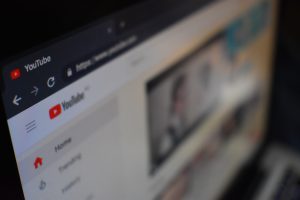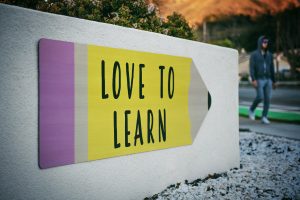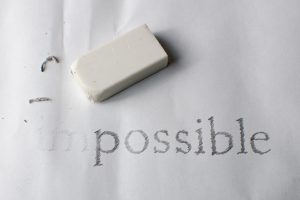Toda y our class learned a little bit about coding and how it can be used in the classroom. I have heard so much about coding both in my work as an EA, as well as from my own children who have done it in their own school. I have never really understood what exactly coding is, however, and it always has felt like a daunting complicated skill to me. Through the videos we watched prior to today’s class I found that it began to make a little more sense. Having coding explained as breaking a problem down into different components to solve made more sense to me. I tried the coding with Anna and Else program today and honestly found it a little tricky. Though I understand a little more about what coding is and how it might be useful in the classroom especially given how technology is such an ever expanding area, I still can wrap my brain around how it works. I think if I had had more time today to work in the coding practice program I may have been able to figure it out, but once it started asking me to code multiple lines I was lost. From my experience though, children seem to really love coding, and I do see how it is a skill that can help in many areas of learning, so I would like to expand my own learning as well.
y our class learned a little bit about coding and how it can be used in the classroom. I have heard so much about coding both in my work as an EA, as well as from my own children who have done it in their own school. I have never really understood what exactly coding is, however, and it always has felt like a daunting complicated skill to me. Through the videos we watched prior to today’s class I found that it began to make a little more sense. Having coding explained as breaking a problem down into different components to solve made more sense to me. I tried the coding with Anna and Else program today and honestly found it a little tricky. Though I understand a little more about what coding is and how it might be useful in the classroom especially given how technology is such an ever expanding area, I still can wrap my brain around how it works. I think if I had had more time today to work in the coding practice program I may have been able to figure it out, but once it started asking me to code multiple lines I was lost. From my experience though, children seem to really love coding, and I do see how it is a skill that can help in many areas of learning, so I would like to expand my own learning as well.
Category: EdTech
 Well this has been an interesting week to say the least. With the ever evolving covid-19 crisis taking place around the world right now, UVic shifted from face to face classes to online instruction this week. So for our Tech class, our entire cohort participated in the lesson through a Zoom call. This was my first time using Zoom, and though I was skeptical at first about how 32 students and an instructor could all be on one video call, it actually worked really well! It was very easy to join the call as Rich had emailed everyone a link. A couple features that I liked about the Zoom program were that you could change how you viewed everyone on the call. When I first joined the call, whoever was speaking would show up on the main part of the screen, and then 3 or 4 other people would show along the side in a smaller frame. Everyone else would be out of view and only connected through audio. However, there was an option you could click on that showed everyone who was on the call in thumbnail size frames so that you could see everyone all at once. This was nice as it connected everyone together more, and you could see peoples expressions and participate in conversations a little better. We were doing group presentations as well, and so having the feature where everyone could be muted except those presenting was a good to have as it prevented hearing a lot of background noise and interruptions. The presenting group could also split their screen so that everyone could see their PowerPoint slides as well and follow along with the presentation. I really liked that feature (even though I couldn’t quite get mine to work properly) because originally I thought we would just have to talk about our topic to the group without being able to show the slides because I didn’t understand how we would be able to through a video call.
Well this has been an interesting week to say the least. With the ever evolving covid-19 crisis taking place around the world right now, UVic shifted from face to face classes to online instruction this week. So for our Tech class, our entire cohort participated in the lesson through a Zoom call. This was my first time using Zoom, and though I was skeptical at first about how 32 students and an instructor could all be on one video call, it actually worked really well! It was very easy to join the call as Rich had emailed everyone a link. A couple features that I liked about the Zoom program were that you could change how you viewed everyone on the call. When I first joined the call, whoever was speaking would show up on the main part of the screen, and then 3 or 4 other people would show along the side in a smaller frame. Everyone else would be out of view and only connected through audio. However, there was an option you could click on that showed everyone who was on the call in thumbnail size frames so that you could see everyone all at once. This was nice as it connected everyone together more, and you could see peoples expressions and participate in conversations a little better. We were doing group presentations as well, and so having the feature where everyone could be muted except those presenting was a good to have as it prevented hearing a lot of background noise and interruptions. The presenting group could also split their screen so that everyone could see their PowerPoint slides as well and follow along with the presentation. I really liked that feature (even though I couldn’t quite get mine to work properly) because originally I thought we would just have to talk about our topic to the group without being able to show the slides because I didn’t understand how we would be able to through a video call.
So all in all I think Zoom is a great tool to use when making a video call. I was apprehensive about using it at first but found it very user friendly. The only difficulty I found was when I tried to split my screen to show my slide presentation I couldn’t get the presentation view to work. On my screen it looked like it was working but on the rest of the groups screens they were just seeing the slides in edit view. Other than that I thought everything worked smoothly, and I enjoyed using it. One thing I would be curious about learning however, is what the process is to set up a call. We didn’t get to experience that part of the program as our teacher had everything set up so I’m not sure what that entails.
In this weeks tech class we started with a recap about the visit to George Jay elementary to learn more about inquiry learning in primary grades. Hearing my peers’ takeaways from that experience, and discussing inquiry a little further, just once again reminded me how important it is incorporate this approach into the classroom and it is definitely something I want to learn more about and bring it into my practice.
weeks tech class we started with a recap about the visit to George Jay elementary to learn more about inquiry learning in primary grades. Hearing my peers’ takeaways from that experience, and discussing inquiry a little further, just once again reminded me how important it is incorporate this approach into the classroom and it is definitely something I want to learn more about and bring it into my practice.
We then talked about multimedia learning and the pros and cons of using different medias as teaching platforms. The ones we specifically talked about were TeacherTube, YouTube, and Khan Academy. I have never heard of TeacherTube before, but I would be interested in looking into it to see whether I think it would be something I would use in the class one day. For YouTube, I do think there are times that it can be helpful as a learning tool, but I would be very cautious to use it in the classroom. I think so many kids these days love to watch YouTube and are very versed at how to use it. I feel like it could quickly become a distraction for students as it is so easy to veer away from the intended activity to another video of interest for the student. When I have worked as an EA in different classrooms where the teacher has allowed children to use YouTube, I have found that it causes more problems and behaviors than it is helpful. I have also seen it used as a time filler where students aren’t actually watching videos for educational purposes, and I think it is totally unnecessary. If I was to use YouTube in my future classroom it would be for a specific purpose that would be guided by me, and only once and a while. A tool that I see myself using in the classroom if I am teaching intermediate or middle school would be Khan Academy. I think it is a great resource, though it would really only be beneficial for older students. But for anyone that needs a little more explanation about a particular topic, I think Khan Academy can be helpful. These videos do tend to teach to once style of learning however, so if the format of the videos and explanations don’t fit a students learning style then it may not be as effective.

Photo by Dragos Gontariu on Unsplash
This last week our class went to visit George Jay Elementary school and talk with Rebecca Bathurst-Hunt, a kindergarten teacher there. The focus of this visit was to learn more about inquiry learning in primary grades. I found it interesting to hear Rebecca talk about how she incorporates inquiry into her kindergarten class as what we have learned about inquiry so far seems to pertain more to older grades. I liked how she explained that a good place to start is to simply begin a lesson or unit with a question, rather than just stating to the students what they will be learning about. This automatically sparks the students’ curiosity and gets them thinking about different possibilities for learning. This is a great base level for beginning to guide students to learn about inquiry without overwhelming them. My biggest concern about doing inquiry with younger grades has been wondering how they would know how to actually navigate an inquiry and know what kinds of questions to ask and what direction they need to go to complete their project. Rebecca explained how she scaffolds inquiry by starting with a more structured project at the beginning of the year where the whole class inquires about one question, and she guides the process. Then she slowly begins to give the students opportunity to take more control over their learning through different projects over the year until they are ready to do their own inquiry. I love how she had little areas throughout the classroom with different set ups that connected with their inquiry to engage students with further learning based on their curiosity and promote provocatios. I also like how she really stressed honoring the students learning by providing opportunities to showcase it.
 Another thing that stood out for me was how she talked about her “teacher heart.” This is where she hold her values as a teacher and decides what she feels is most important for learning. As she said, whenever she is approached with new buzz words, programs, technology etc, she first reflects on whether it aligns with her teacher heart before she decides if she will use it or not. She encouraged us all to decide what our teacher heart is, and \i think it is a great way to make sure you hold to your values as an educator.
Another thing that stood out for me was how she talked about her “teacher heart.” This is where she hold her values as a teacher and decides what she feels is most important for learning. As she said, whenever she is approached with new buzz words, programs, technology etc, she first reflects on whether it aligns with her teacher heart before she decides if she will use it or not. She encouraged us all to decide what our teacher heart is, and \i think it is a great way to make sure you hold to your values as an educator.
In this weeks class we had a guest speaker, Jesse Miller, come and talk to us about online safety and privacy. I found it very interesting and helpful to learn more about how and where our information is tracked, as well as things to keep in mind when having students work online. I think it is so important for children to learn this kind of information as well before they start using things like social media or posting on YouTube. I think that many kids don’t understand the digital footprint that is left behind anytime they post something, and the ramifications it can have in the future. The earlier you can educate them and get them thinking about that, I think the more effect it will have on them being mindful and careful about what they post online. Jesse’s presentation was a good reminder to me that while there are useful benefits of social media and other online tools it is important to ensure you understand their privacy agreements and be mindful about what kind of information you share when using them.
After Jesse’s presentation we also practiced video editing in iMovie. I used a short video of Rich’s daughter and her goats, and learned how to trim, split, and add transitions, titles, and credits to the video. I found it fairly straight forward to do because we were given very clear and detailed instructions from our teacher. If I had had to figure it out on my own, however, I would have found it difficult as there were a lot of steps and it was tricky to find some tabs within the program. I think iMovie would be a fun tool to use with students, but I believe it would be better for older grades like grade 4 and up. Here is the video clip that I edited:

Photo by Tim Mossholder on Unsplash
Our group chose to research Khan Academy as our tech topic today. Khan Academy is an online learning resource that creates lessons and videos on a wide range of subjects and topics. It was created in 2008 by Salman Khan, and aims to provide free education for students everywhere. The website states, “Our mission at Khan Academy is to provide a free, world-class education for anyone, anywhere.” The lessons are done in the form of videos, with an instructor drawing about and explaining the topic. There are also opportunities to be tested. The main courses offered are Math, Science and Engineering, Arts and Humanities, College, careers and more, and economics and finance. Within each of these topics there are more specific subjects.
Educational technology such as Khan Academy helps make education and support accessible to all learners. When using this kind of tool, it is important to consider the pros and cons, as well as privacy issues that you may need to be aware of. Here is a link to the Khan Academy website.
Pros:
– help teach students on their own
– easy to access
– wide range of topics/subjects
– you can learn at your own pace
– there are ways to test your learning
– many different questions to ensure you understand
– free, nonprofit
– when students need further explanation about a topic, if the teacher is not easily available for one on one help, Khan Academy can be a resource for that extra guidance.
– can be a good studying tool
-encourages UDL and individual pace of learning
Cons:
– no real classrooms
– teachers are not present
– still very conventional (SAT MCAT prep)
– students must have access to an electronic device and internet connection
– innate differentiation between students
– sometimes you have to sort through many different examples to find one that suits your specific needs/learning style
– when learning from video examples, it can be difficult to replay the same video to go over a specific aspect of the video, as the system tries to move forward onto the next video, however if you access it from another source, the video will play.
– loss of collaboration
– only one teaching style
– the videos could be to fast for some students to follow
– cannot ask specific questions about a subject. The videos are good but if you are not sure about something explained there is no way to clarify
– Students can work ahead of where their class is if they have a strong interest in a subject and then when they are in class they are bored and can start causing disruptions
Privacy Policies:
https://www.khanacademy.org/about/privacy-policy
By: Lauren T, Alison, Meghan, Kiya
This week our class went on a field trip to Pacific School of Innovation and Inquiry (PSII). Unfortunately I was unable to make the field trip due to having to stay home with a sick child, but I was able to go on to their website and learn about their approaches, as well as watch a TED Talk done by Jeff Hopkins who founded PSII. I really connected with a quote that Jeff began his TED Talk with which was, “Education is not the filling of a pail, but rather the lighting of a flame.” This is such a powerful statement that I think really sets the ton e of PSII and their educational philosophy.
e of PSII and their educational philosophy.
After listening to the TED Talk, and exploring the PSII website a bit, I find that I am intrigued to learn more about their approach to education. While there is definitely a focus on inquiry based learning in the new BC curriculum, and we have talked a little bit about it in our program, PSII has taken it to the next level. Some areas that stand out about how PSII is different than regular public school in their approaches are: the different subjects are integrated rather than taught separately, teachers and learners work together to come up with learning plans, students personal interests are central to the whole experience, and students are grouped in whatever way makes most sense and the groupings are dynamic. From the bit that I have learned about PSII and their approach to education, it seems like they are putting into action an ideal learning environment.
For all the positives that PSII appears to bring to education, I believe that this kind of learning environment would only truly succeed in specific situations. I think it would be extremely difficult to apply PSIIs’ approaches in a regular public school. In a regular school setting, to be able to give students this much freedom with the curriculum, and to create completely individual learning plans for each student, it would be very difficult. I also think that for younger students (mainly elementary) this much freedom and inquiry would be difficult. Inquiry based learning is important and teaches students many added skills, but for younger learners I think they still need a higher level of guidance from the teacher as they learn how to successfully approach this kind of learning. Maybe in the future, as education keeps adapting and shifting, there will come a time where more schools can successfully approach education in a similar way as PSII. For now, I think finding a balance where teachers can challenge and guide students to more inquiry based learning, while still fitting in the confines of BC curriculum, is a good place to start.
This is a link to an article that looks at some of the benefits and challenges of inquiry based learning:
https://www.kqed.org/mindshift/29714/the-challenges-and-realities-of-inquiry-based-learning
In this weeks class we watched a documentary called RiP! A Remix Manifesto. This 90 minute show talks about the “war” of copyright between people who use material created by someone else and expand, adapt, change, and use it for their own work, and those who created the original material. It is a long standing battle with strong opinions supporting both sides of the argument. I would say, at this point, I sit somewhere in the middle. I can understand the frustration and anger of those who work hard to create something, especially if it is their means of income, only to have others access the work for free and then take it and change it into work of their own. However I would also agree with what was said in the documentary that “everything comes from something.” People do not live and create in a vacuum, and so their ideas are always influenced (either consciously or subconsciously) by something else. From this standpoint, we are all guilty of breaking copyright laws. I think especially in today’s digital world, where everything is so easily accessible through the internet, copyright laws need to adjust and fit into our modern reality.

Photo by Nick Morrison on Unsplash
We also learned about open educational resources today. These are educational resources that are shared freely through creative commons, and so are accessible for all to use/change/redistribute. These are very useful tools to have access to as a teacher, as you do not need to worry about copyright. I think that it is important for teachers to make sure that they follow copyright protocol with the resources they use as it not only is good practice, but also models it for their students. I thought the Open Resource Commons was a convenient and easy way to access many learning resources. I would still encourage teachers to look critically at the resources they find through OER Commons and other OER tools. Just because the material is meant for educational purposes, and made accessible to teachers, it is still our responsibility to ensure that the information we find this way is credible.
This is a link to an article that examines open educational resources in depth, their pros and cons, and who it is that is creating these resources. This is a longer article but it contains some helpful information for those who are interested in learning more about OER, and what the benefits and challenges might be in using them.
https://www.researchgate.net/profile/Jan_Hylen/publication/235984502_Open_educational_resources_Opportunities_and_challenges/links/54d321a80cf250179181779b.pdf

Photo by Ian Schneider on Unsplash
Today in class we talked about the “Most Likely to Succeed” documentary which examines different teaching approaches when the teachers are not bound by a curriculum and have the freedom to teach students by the method they choose. I think this is happening to a certain degree in classes more and more, though not to the extreme as in “Most Likely to Succeed. As I am learning through my education program, and through what we see happening in classes today, teachers are moving farther away from the more traditional style of teaching that we have known in the past. While it appears that education is moving forward in a positive direction, this shift doesn’t come without its share of challenges and obstacles. I think one of the main challenges that arises for those who are changing pedagogy, is reluctance from teachers who have been teaching a long time and are set in their ways, parents who grew up in the old system and still look for things like grades etc to demonstrate their child’s process, as well as administration who may not support teachers new ideas. When certain systems have been in place for so long, it can be difficult for some people to shift their ways of thinking. While there are many teachers who are embracing newer progressive pedagogy, there are those whose training and experience come from the older more traditional schooling making it difficult for them to embrace change. Many parents also went through the older school system and still look for those values to be reflected in their child’s education. If a teacher is changing the way learning happens, many parents may raise concern about how they can be sure their child is learning what is stated in the curriculum. Though today’s teachers can face many challenges as they adapt their classrooms and teaching to fit into today’s diverse learning environments, this shift makes for an exciting future in education.

flicker@morbergCCBYNC2.0
Today marked a milestone in my technology journey, I created my first blog website! This was created with WordPress, and for the most part was fairly straightforward. Though we had very detailed instructions, with my limited/lack of experience doing this kind of thing, I found that I still had questions and needed a bit of help. For those who are as technologically challenged as me, yes, you can do it without too much stress and anxiety! For those who are a little more tech savvy, it’s a breeze.
I think that blogs are a great tool for sharing information through either Inquiry projects or simply sharing about your interests and passions. Using this kind of platform as an educational tool can entice student interest as they can have some fun with creating their blogs and getting creative in their posts. I think it fits into a middle/high school setting as older students will be able to utilize the platform to a fuller extent, however, with a little more guidance, it could also be utilized in elementary schools. In all cases, educating the students about the importance of understanding privacy settings, as well as appropriate posting is important.
For those looking jump into the world of blogging, here is a little how to video to help you get on your way!
Recent Comments